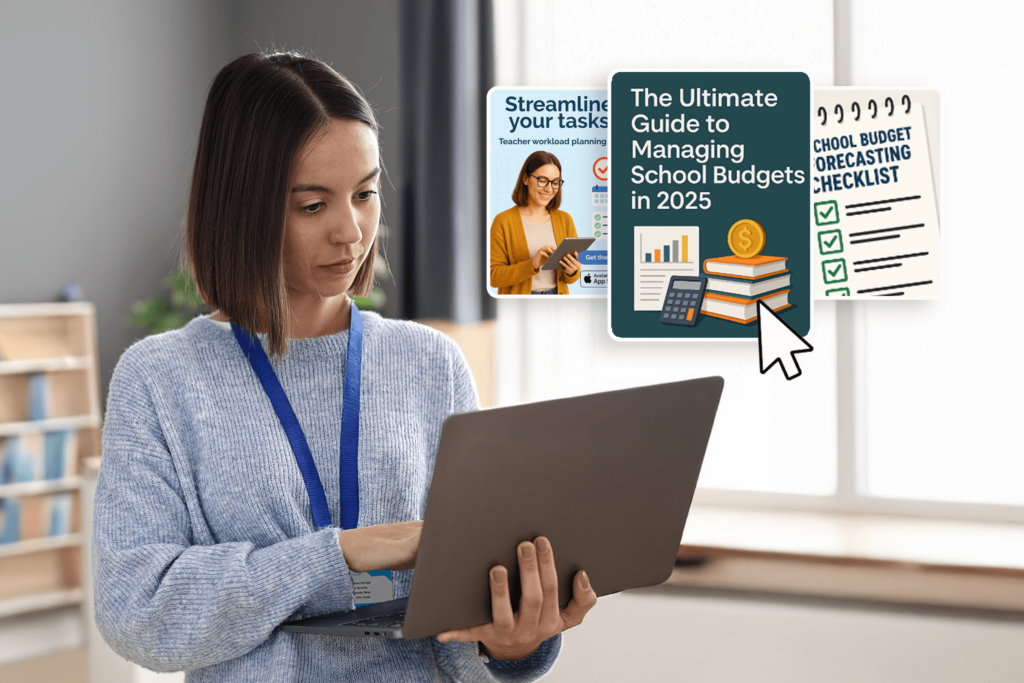


Selling to schools in 7 easy steps

Do you want to generate more leads in education? We’ve got 7 easy steps to help you get started:
1. Understand the UK education sector
The first step to successfully selling to schools is understanding your audience – and for you, that’s UK schools and education establishments.
As there are many types and phases of education, it’s essential to understand how different settings work to plan your marketing appropriately. It’s also helpful to know a bit about school spending – how and what schools buy, what their priorities are, how much money they have and who makes the spending decisions.
2. Make a plan
Before you think about the content and design for your campaigns, it’s important to know exactly what the purpose of your marketing to education is and what you want to achieve.
Think specifically about what you’re selling. How would schools benefit from it? What would you like to achieve? And what are your sales targets?
Set yourself a clear objective by considering what the overall aim of your marketing is. Some common examples are:
- Promoting a product or service.
- Generating sign-ups.
- Increasing bookings.
- Raising awareness.
Once you’ve decided on your main objective, create some specific, measurable goals. You might want to:
- Increase the number of teachers signed up to your mailing list by 30%.
- Increase your sales figures by 5% during the spring term.
- Complete 10 product demos with education staff.
- Boost school group bookings by 10% in the next academic year.

Finally, think about your long-term strategy.
We recommend following up with the teachers and education staff who engage with your main campaign as it’s a great way to nurture leads and build relationships. Take the time to send a personalised follow-up email or pick up the phone to call them.
It’s important to remember that not all sales and bookings are made immediately so keep your brand visible, follow up with warm leads and continually inspire schools to take action.
3. Choose your schools, teachers and decision makers
The next step is to identify your audience. Consider who your campaign is relevant to and choose appropriate schools, teachers, and decision makers to connect with.
Reaching the right decision makers is key to boosting your engagement rates and generating leads. Here are a few ways to segment your marketing mailing list:
- Phase of education
Nurseries, primary schools, secondary schools, sixth forms and colleges, and universities. - Type of education establishment
Academy schools, multi-academy trusts, independent schools, special schools, state schools. - Teachers and decision makers
Choose your specific targets from 134 education job roles, including the senior leadership team, heads of year, heads of department, subject teachers, support staff and more. - Area or region of the UK
You could choose the whole of the UK, individual countries, counties, regions, local authorities or even postcode areas. For example, our client, Royal Museums Greenwich, often sends marketing campaigns to schools within a 100-mile radius of the museum because they know that schools take longer trips to London.
Read Royal Museums Greenwich’s case study here.
Need help deciding which schools and decision makers to target? We’ve got over 670,000 contacts on our database. Get in touch with us to curate your bespoke mailing list.
4. Plan your marketing schedule
A well-timed marketing campaign can boost your engagement rates, generate quality leads, and help you sell more to schools.
We always recommend sending a series of marketing campaigns throughout the academic year, rather than a one-off campaign. It’s the ideal way to boost your brand awareness, stay at the top of teachers’ minds, nurture relationships, and generate leads.
Here are our top tips:
- Schedule your campaigns around key events in the school calendar to showcase your knowledge and relevance to education.
- Plan your marketing around your own business requirements such as event dates, awareness weeks, and course dates.
- Test multiple days and times when sending your campaigns to identify which slots generate you the most engagement.
Remember– the most effective marketing schedule for you can vary depending on what you’re offering, the time of year, the investment needed by schools, and the timescales involved in the decision-making process.
5. Create an eye-catching campaign
Email marketing is the simplest and most cost-effective way to run marketing campaigns.
First impressions really do count. That’s why you should carefully plan and create your campaign to ensure you’re:
- Capturing teachers’ attention.
- Engaging decision makers.
- Prompting them to take action.
Clear, well-written copy and eye-catching email designs will help with that.
Need inspiration? Check out our portfolio to see examples of email campaigns that boost engagement and generate leads. When writing email content, look back at your objectives to decide what to include and what action you want teachers to take. Here’s a sneak preview of what we’d recommend:
- Aim for 6-8 words in your subject line.
- Keep your content short and to-the-point.
- Include names and job titles to personalise your emails.
- Add images, bullet points and calls to action (CTAs) to break up long sections of text.
- Feature high resolution images to make your email visually appealing.
- Make sure your email design is mobile optimised.

Still unsure? We’ve got a team of copywriters and designers who are experts at developing campaigns that are optimised for increasing teacher engagement.
If you’re looking for further guidance, take a look at our Creative Services page.
6. Test your campaigns
Every marketing campaign is different. What works for one organisation, might not be the best approach for another.
You can follow all the general guidance above to achieve great engagement rates but to give your marketing that extra boost, you should test and measure what works best for your specific campaigns.
You could test things like what type of subject line generates the most opens, what CTA text generates more clicks and which teachers are most receptive to your marketing.
One quick and easy way to test your campaigns is to run an A/B test (or even an A/B/C test if you’re feeling adventurous!). It’s essentially a foolproof way to ensure your campaign gets the highest engagement possible.
An A/B test lets you compare two versions of your marketing campaign to determine which performs better – this could be two different subject lines, two different CTA colours, or even two versions of your email content.
The audience is split into two groups (usually 10% each). One receives Version A. The other receives Version B.
It’s a great way to see what your audience responds to, and you’ll be able to use the findings to optimise your future marketing campaigns.
7. Measure your campaign performance
Take time to review how your campaigns have performed. Your campaign analytics will help you to assess the effectiveness, identify what worked and what didn’t so you can use your findings to inform your future marketing activity.
Buzz’s Top Tip:
Use the objectives and targets you set at the start of the process to identify which of your campaigns are working most effectively.
You can do this by measuring:
- Email open rates
- Email click through rates
- Website analytics
- Enquiry numbers
- Sales figures
- ROI (return on investment)
Some products or services require a longer decision-making process, so you might not see an immediate sales return – we recommend planning your campaigns to ensure you keep in constant contact with teachers to remain top of mind.
Be sure to use our 7 easy steps to enhance your selling to schools strategy.
Want to kickstart your marketing journey? Get in touch! We’d love to hear from you.





